The Bottom Line
Background
- It’s no secret that America’s power grid is in bad shape. It’s only a matter of time before failures occur and quickly spread. Real estate and houses are expensive, but what’s the value of a nice house that doesn’t have electric power?
- Redundant power systems are expensive, often complicated, and require regular maintenance.
- We started by reverting to non-electric appliances (wind-up alarm clock, hand mixer, wind up lantern, brooms, clothesline for drying clothes, and so on) and hand tools.
- Next, we downsized our electric appliances (using a laptop to watch videos instead of the big-screen TV, ceiling fans instead of the air conditioning unit).
- Next, we purchased a large roll-around portable gasoline generator.
- Next, we installed a Generac whole-house generator.
- Next, we installed a Tier-2 solar PV (and an 8-gallon solar hot water unit).
- Next, we installed a portable solar battery pack (10.2 kW EcoFlow PRO) with a 16-year cycle life.
- Next, we installed an outside kitchen that runs off our portable solar battery pack (reducing our in-house electric usage by an additional 50%).
- Next, we plan to purchase an additional portable solar battery pack (just in case).
- Self-sufficiency requires that we not rely on others to provide the necessities of our everyday life. It’s up to us to provide our own independence. We’ve seen this coming (today’s rising prices, uncertainty, and instability) since 2008 and have been working tirelessly since then to find practical solutions for dealing with the future.
Pros
- We haven’t paid an electric bill in over 7 years.
- Excess electricity is sold back to the electric company (at a rate lower than the rate charged to us when we bought electricity from the electric company).
- Solar hot water is the best kept secret in the solar industry. Solar PV may not be practical (for most) but solar hot water is very practical.
- Accruing carbon credits will eventually pay for our entire system (see Justification, below).
- Solar panels are warranted for 25 years, but although they degrade over time, they’re actual lifespan is indefinite.
- Residential properties with solar sell faster than comparable properties without solar.
- When leveraged with the other self-sufficient features of EBG, solar hot water and solar power work synergistically to enhance the overall value (from a sustainability perspective) of the project.
Cons
- You must pay a minimum monthly service charge for electrical service, even if you don’t buy electricity from the electric company (the minimum charge covers the connection from your house to the power grid).
- Solar arrays are very expensive (batteries even more so) and must be installed professionally due to permitting requirements.
- Solar panels must be scrubbed every two years to keep them clean (a difficult task). The cleaning process can damage the roof. As we dislike tall ladders, we purchased a two-tier rolling scaffolding system to get us (and our cleaning equipment) up to the roof.
- Small or existing PV systems can’t be extended without a full upgrade (due to incompatibilities with newer components).
- Without batteries, you can’t run your house off your solar panel array.
- Your home insurance company may require that you purchase an umbrella policy (to protect the power company’s workers when servicing a dual generation environment).
Cost
- Solar PV (trust me, you don’t want to know).
- Solar hot water is about $3,500 (net after tax credit) for a professionally installed system.
Justification
- Three factors helped us to make the decision to purchase solar PV/hot water: tax credits, the ever-increasing cost of monthly electric service, and carbon credits:
- Tax credits: At the time of our purchase, we received a 30% tax credit (calculated on the gross amount).
- Increasing cost of electricity: Prior to 2020, the rapidly increasing cost of electric service was reducing the payback period for solar from 25-years to 12-years in our case). This trend has reversed since 2020; solar availability has dropped, and all costs are skyrocketing without relief.
- Carbon credits: Our PV system earns about 1 carbon credit per day (1 carbon credit is approximately equal to one tree). Although we can’t trade residential solar credits in America at this time (no market established as yet), they can be traded in Europe. Based on this knowledge, we foresee a time when a carbon credit could be worth from $50-$100 each (due to the rapidly advancing green agenda).
- Most medications must be refrigerated (electricity is mandatory to health maintenance).
- What is the value of electricity if no-one has it? It is priceless.
- Solar hot water systems are an inexpensive solution with a 5-year payback period (for a family of 2 adults).
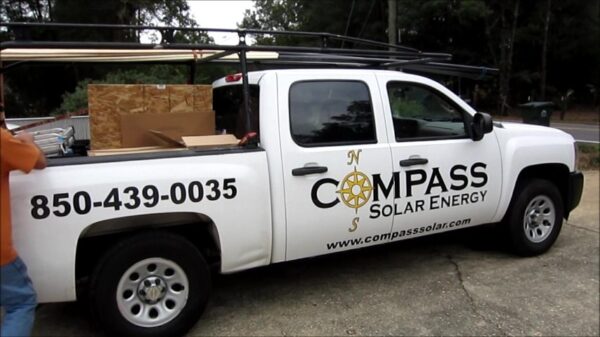

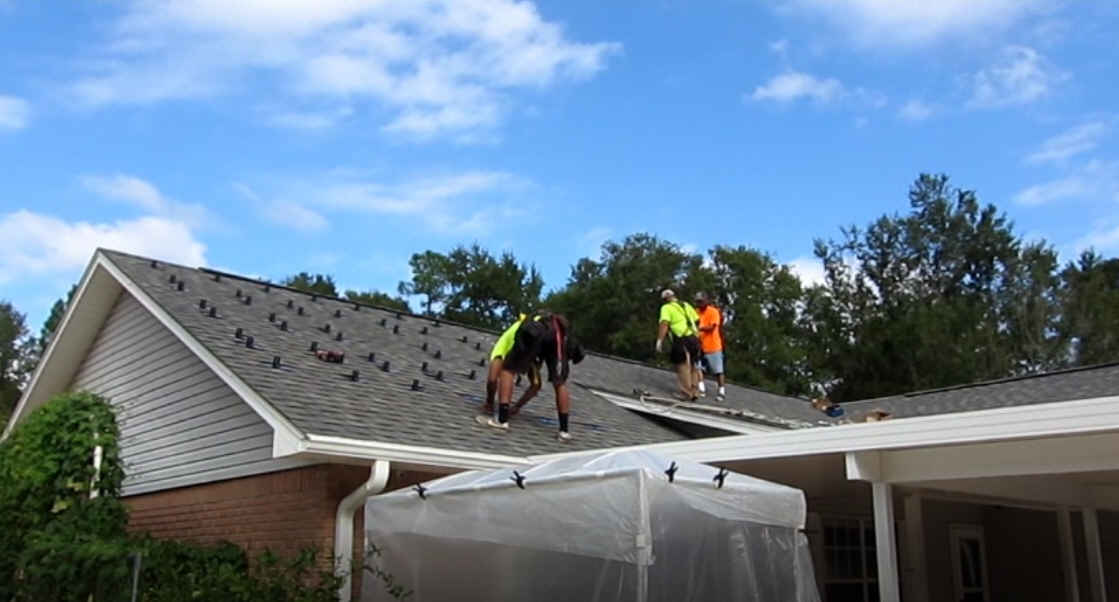
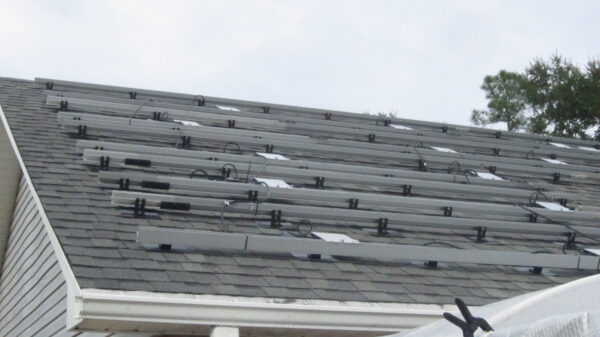
The Tier-2 solar electric PV and hot water system went up in less than a week, thanks to the outstanding work of Compass Solar.
Solar Hot Water — The Best Kept Solar Secret
Solar hot water systems are the best-kept secret in the solar realm, especially in sunny states like Florida. The net cost of a solar hot water system is about $3500. It provides 80-gallons of hot water (up to 150-degrees) for 10 months of the year (reducing our overall electricity needs by at least 25%).
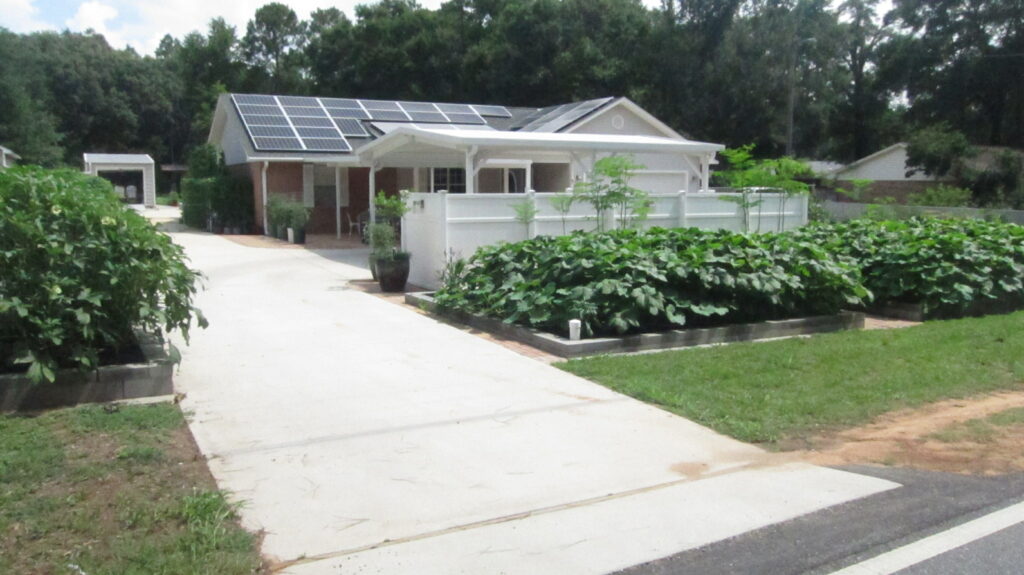
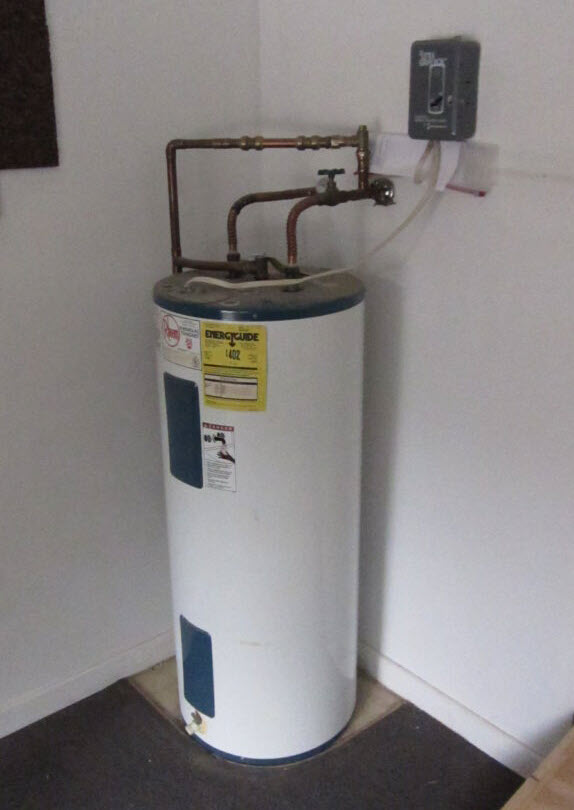
Compass-orig-water-heater-rotated.jpg
This is the original electric 40-gallon hot water tank (above).
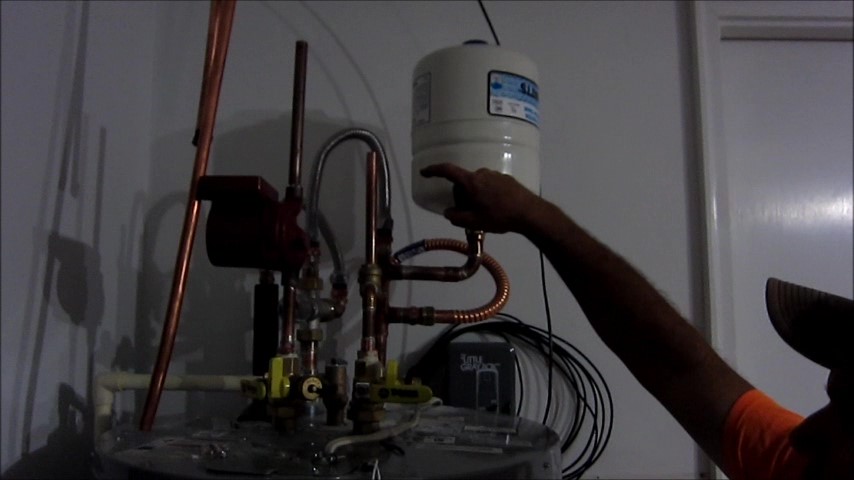
This image shows the top of the new 50-gallon solar hot water tank. Click here to see a video that describes how to drain the unit for maintenance.

